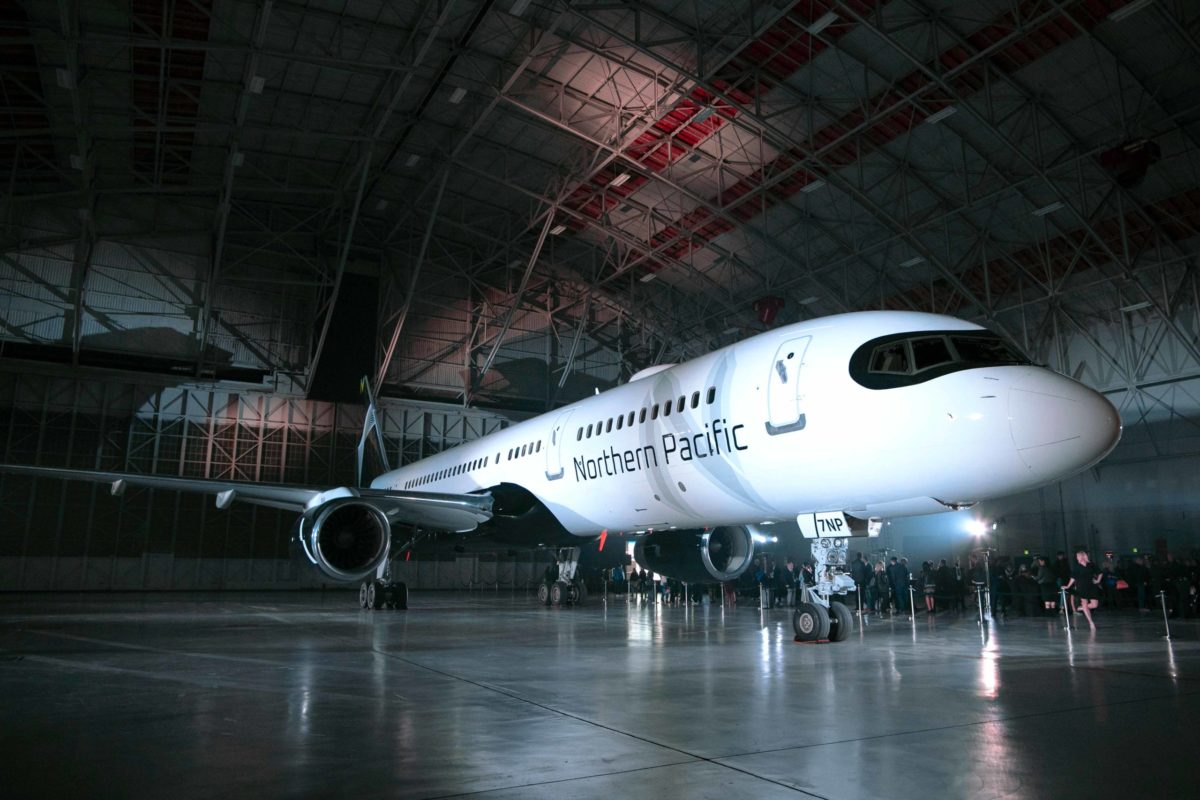Northern Pacific Will 'Rip Off' Icelandair Model With Stopover Vacation Tie-Ins

Photo Credit: Northern Pacific thinks now is an opportune time to launch a low-cost longhaul airline to Asia, despite the travel restrictions in much of the region. Northern Pacific Airways
Startup Northern Pacific Airways aims to begin connecting the lower 48 U.S. states with Northern Asia via Anchorage by the end of this year — either the third or fourth quarter, depending on when it gets its final approvals from the U.S. Transportation Department.
It has a tall order ahead of it. The countries it plans to serve initially, Japan and South Korea, still have some of the strictest travel rules in the world, and traffic to Asia in general is not expected to recover until 2024. The airline industry writ large is just starting to recover from its worst crisis in a century, and international travel remains moribund, at least compared with 2019.
But these factors make now the perfect time to launch a new longhaul airline, Northern Pacific CEO Rob McKinney told Airline Weekly. “In 2019, it would have been nearly impossible to launch a new international airline – there were no gates or slots at the airports,” he said. “Now, cities are soliciting us, and I think the timing is in our favor.”
The carrier is targeting four cities in Asia: Tokyo Narita, Nagoya, Osaka, and Seoul. These routes will connect over Anchorage to five additional U.S cities: Newark, Los Angeles, San Francisco, Las Vegas, and Orlando. The initial focus will be on leisure traffic between the two continents, with an added bonus for travelers being the ability to clear U.S. customs and immigration in Anchorage before the onward journey. Orlando and Las Vegas, in particular, do not have much competition for Asia connections, but demand for travel from Asia to those cities was strong before the pandemic, McKinney said.
Cities like Nagoya and Osaka also have fewer connections to the U.S. than Tokyo or Seoul do, so McKinney believes Northern Pacific’s one-stop flights to the U.S. will be more attractive than two- or three-stop trips to Las Vegas and Orlando, for example.
Since airlines stopped making technical stops in Anchorage en route between Asia and the U.S., Alaska has had few direct connections to Japan and Korea. Part of Northern Pacific’s model includes offering Alaskans more direct flights to Asia, using feed from Ravn, from which Northern Pacific is being developed and which operates to 11 cities in Alaska. But Alaska-Asia traffic will be in the “single digits” of the new airline’s traffic, McKinney said.
Instead, the airline will focus on connecting traffic. “I unashamedly will admit I am wholesale ripping off Icelandair,” McKinney said. Like Icelandair does with Iceland through its hub in Reykjavic, Northern Pacific plans to promote stopover vacations in Anchorage and Alaska. The airline is working closely with the tourism bureaus in both the city and the state. “Icelandair has charted the course for us,” he said. “We will try to incentivize people to stop in Alaska for a few days on the way to Asia, and we have a regional fleet as an advantage.”
Northern Pacific has two former American Airlines 757-200s in its fleet now. It is in talks to acquire six additional former United Airlines 757s, and three former Icelandair 757s. The former American jets are powered by Rolls-Royce engines, while the former United aircraft have Pratt & Whitney engines. The fleet of 11 is necessary to account for the maintenance needs of the aging aircraft and to provide enough spares to offer daily service on the planned route network, McKinney said.
The low-cost longhaul model has been tried before, mainly across the Atlantic. But one thing that sets Northern Pacific apart is its cryptocurrency-based loyalty program. The airline will offer “FlyCoin” cryptocurrency instead of points or miles. These can be exchanged for other cryptocurrencies, for government-issued money, and in the future may be used to buy goods and services from Alaska merchants in place of currency, McKinney said.
“I’m a big believer from an entrepreneurial perspective that being a contrarian is the best time to launch a business,” he said.
